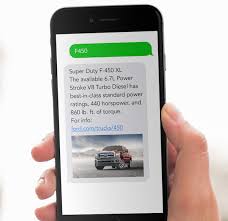
Multimedia Messaging Service
 image ©U.S. Short Code Directory
image ©U.S. Short Code Directory
MMS is the Mulitmedia messages service available on all modern phones phones. It is advertised as adding rich media such as images, videos, audio to an SMS message. However these messages are not just bigger SMS messages, they are separate entities and use a combination of SMS and data to be transmitted from sender to receiver. Both the sender and receiver must have data services (mobile or broadband) in in order to send or receive an MMS. As with SMS, MMS is a store and forward messaging system with the message being pushed to the recipient if the recipient is on the network, and stored in the MMSC if the recipient is not.
At the core of the MMS protocols is the MMSC (Multimedia messaging Service Centre). The message is sent to the senders MMSC, passed onto the receivers MMSC for delivery to the recipient.
- The message is created within the client messaging app, the same app as used to send SMS messages. Once the app notices that it is an MMS message it switches the format / protocol to be used and will notify the sender of this.
- The message is encoded using the standard MMS Encapsulating Format
which includes:
- Header that amongst other things has the details of the receiver
- The body of the message is made from a number of parts
- Each part will be one of text, image, video or audio
- There are limits to the individual parts and the overall message. For example the messaging app will reduce the size of an image to ensure it is within the limits
- The client will send the message over the Internet via HTTPS POST to the local MMSC. So a data network is needed to send an MMS message
- If there is no dataa network then the massaging app will wait until there is a usable data network. Sometimes messages can be timed out
- The MMSC receives the message, stores it, and in the process generates a URL for the message
- The MMSC creates a Wap Push message that is sent to the recipient of the MMS via SMS. The message will contain the URL of the message as stored on the sender's MMSC
- The recipient will use their data network to get the message from the MMSC. Note this is a push data message.
- The recipient's message app will load the message onto the phone
- If the receiver does not have a data network when they receive the SMS message then this will be stored within the message phone until a data network is available
- If no data network becomes available in the time allowed, then the URL will be displayed allowing the recipient to use a different device to view the MMS
It is clear that to send or receive an MMS message an SMS message plus a a data transfer is required. Most (UK) MNO will charge the sender 55p to send an MMS. This is despite the sender having already paid for unlimited SMS messages and 4G data.
© mobilephonetechnology.co.uk all rights reserved 2017-2025
